Blood can say many things about a person, because it is basically the thing that determines life and fate. Did you know that there is even a diet based on blood type, which was very trendy at one time? Some fat men are still interested and research the list of products allowed to use.
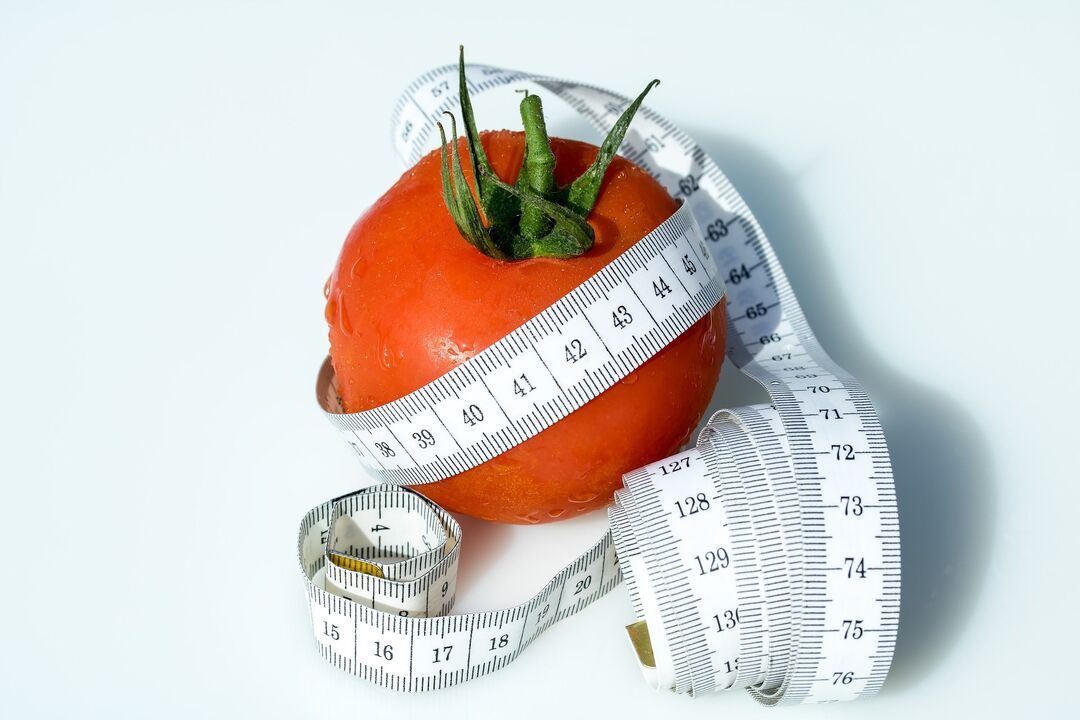
It should be said right away that this technique has been criticized by doctors more than once and has no scientific basis. But we've been warned, so let's try to find out everything about this diet.
History of the diet
Once upon a time, people believed that everyone had the same blood. Do you remember the fairy tale about Mowgli? "You and I are of the same blood - you and I! "But soon after trying to share their blood with the sick and injured, a theory arose that the blood was actually different.
Many scientific studies and experiments with animals and humans were carried out, but it was only in 1900 that Karl Landsteiner discovered three blood groups, and a little later, a fourth blood group was discovered by his students. discovered.
Currently, the world has applied classification based on letters and numbers:
- O or I - first;
- A (II) – second;
- B (III) – third;
- AB(IV) – fourth.
The most common blood types in the world are the first and second blood types. Its bearers are 80% of all humanity. The third type is less common, 15% have it, and the fourth type is considered the rarest and is represented by only 5%.
American naturopathic physician Peter D'Adamo proposed at the end of the twentieth century that if certain human diseases are directly related to genetic characteristics and often depend on blood type, then it is likely that nutritionaccording to blood type is also possible. He asks about each patient's preferences for certain foods and compiles a tailored diet for each group. All products are divided into useful, undesirable and neutral.
D'Adamo has written many books on dieting. They were a huge success among American readers and became bestsellers. After that, his concept of "4 blood types - 4 paths to health" spread throughout the world, and everyone who wanted to lose weight rushed to try the new diet.
What is she?
Basic principles and rules
Nutrition according to blood type is as follows.
- In each period of human evolution, there is a certain diet. When changed, the blood will change and a new group will appear. And so each group has a basic set of products.
- To keep your body in shape, you need to eat the way your ancestors did with a certain blood type. Thanks to the biochemical connection between blood and food, the "right" foods are absorbed better, digested faster, increase metabolism and strengthen the immune system.
- If you exclude "unsuitable" foods from your diet, you can improve your body's performance, strengthen your health and prolong your life.
An example is moving to another living environment or even traveling, when the body does not accept unusual local dishes and health problems begin.
If a resident of the Far North, who has eaten protein-rich foods all his life, decides to move to Europe with a carbohydrate-rich cuisine, there will be a high risk of diabetes and digestive problems.
You don't even have to go far for examples, just look around. Some people hate dairy, others love plant foods, and still others will go hungry without eating a large piece of meat. Perhaps this is not without reason?
Shared dining table for the whole group
Let's get acquainted with the research of Dr. D'Adamo, who divided foods by blood type, highlighting prohibited, allowed and neutral foods.
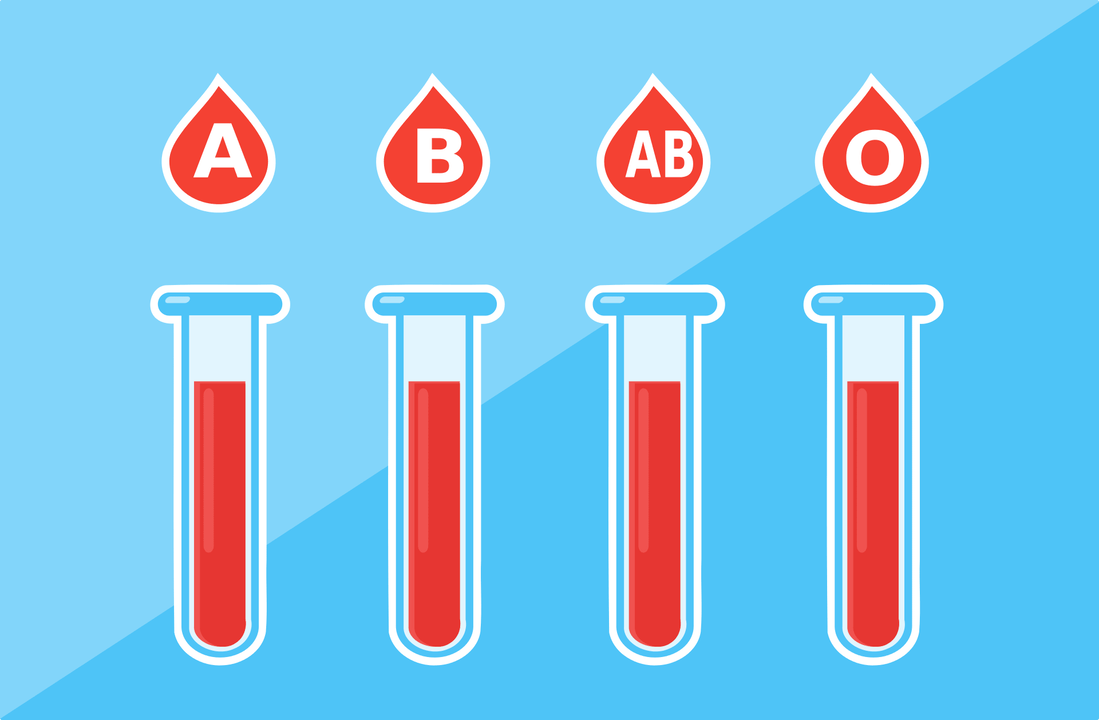
Legendary:
- Products requiring restriction are indicated by a "-" sign;
- allowed – "+";
- neutral – "0".
| Product's name | Group | blood | ||
|---|---|---|---|---|
| I | II | III | IV | |
Cereal and flour products |
||||
| round bread | — | — | — | 0 |
| rice cake | 0 | + | + | + |
| Hot yeast products | — | — | 0 | 0 |
| buckwheat | 0 | + | — | — |
| Cornmeal | — | 0 | — | — |
| Semolina | — | — | 0 | 0 |
| pearl barley | 0 | 0 | — | 0 |
| Barley porridge | 0 | 0 | — | 0 |
| Corn | — | 0 | — | — |
| Pasta | — | — | 0 | 0 |
| Grits | 0 | + | — | — |
| Wheat flour (from durum wheat varieties) | — | — | 0 | 0 |
| Cornstarch and wheat flour | — | 0 | — | — |
| Oatmeal | — | + | + | + |
| rye flour | 0 | + | — | + |
| Muesli | — | — | — | 0 |
| Cookies "Crunchy Cookies" | — | — | 0 | 0 |
| oatmeal cookies | — | 0 | + | 0 |
| Millet | 0 | 0 | + | + |
| Rye gingerbread | 0 | — | 0 | 0 |
| Wheat | — | — | — | 0 |
| Rice | 0 | 0 | + | + |
| buckwheat | 0 | + | — | 0 |
| Cereal bread | — | — | — | 0 |
| whole grain bread | — | — | — | 0 |
| Spelled bread | 0 | 0 | 0 | 0 |
| Rye bread | 0 | 0 | 0 | 0 |
| Bread | — | 0 | + | 0 |
| rye bread | 0 | 0 | — | + |
| rye bread | 0 | + | — | + |
| Corn cake | — | 0 | — | — |
| Cereal | — | 0 | + | + |
| wheat flakes | — | — | — | 0 |
| Barley | 0 | 0 | — | 0 |
Juices and drinks |
||||
| Apricots | 0 | + | 0 | 0 |
| cherry plum | + | + | 0 | 0 |
| Pineapple | + | + | + | 0 |
| Orange | — | — | 0 | — |
| birch | 0 | 0 | 0 | 0 |
| Grape | 0 | 0 | + | + |
| Cherry | + | + | 0 | + |
| Pomegranate | 0 | 0 | — | — |
| Grapefruit | 0 | + | 0 | 0 |
| Cabbage | — | 0 | + | + |
| Cranberry tree | 0 | 0 | + | + |
| Citric | 0 | + | 0 | 0 |
| carrot | 0 | + | 0 | 0 |
| Cucumber | 0 | 0 | 0 | 0 |
| Celery | 0 | + | 0 | + |
| Plum | + | + | 0 | 0 |
| Tomato | 0 | — | — | 0 |
| cider | — | 0 | 0 | 0 |
| Apple | — | 0 | 0 | 0 |
Herbal decoctions and teas |
||||
| hawthorn | 0 | + | 0 | + |
| Valerian | 0 | + | 0 | 0 |
| Ginseng | 0 | + | + | + |
| St. John's wort | — | + | 0 | 0 |
| Mulberry leaves | — | 0 | 0 | + |
| Linden | + | 0 | — | — |
| burdock | — | + | 0 | + |
| Raspberries | 0 | 0 | + | 0 |
| horse feet | — | 0 | — | — |
| mint | 0 | 0 | 0 | 0 |
| dandelion | + | 0 | 0 | 0 |
| Parsley | + | 0 | + | 0 |
| Chrysanthemum | 0 | + | 0 | + |
| Licorice root | 0 | 0 | + | + |
| yarrow | 0 | 0 | 0 | 0 |
| musk | 0 | 0 | 0 | 0 |
| Echinacea | 0 | + | 0 | + |
| Rose hips | + | + | + | + |
Dairy products |
||||
| Pure milk | — | — | 0 | — |
| Yogurt | — | 0 | + | + |
| Food grade casein | — | — | 0 | 0 |
| kefir | — | 0 | + | + |
| Goat milk | — | 0 | + | + |
| Skimmed milk | — | — | + | 0 |
| Milk serum | — | — | 0 | 0 |
| Cream | — | — | — | — |
| Cream | — | — | 0 | — |
| Sour cream | — | 0 | + | + |
| Cow's milk cheese | — | — | 0 | 0 |
| Lam tu sua cuu cheese | 0 | 0 | + | + |
| Processed cheese | — | 0 | 0 | — |
| Cheese curds | 0 | 0 | + | + |
| Homemade fresh cheese | 0 | 0 | + | + |
Oils and fats |
||||
| cod liver oil | 0 | 0 | 0 | 0 |
| Margarine | 0 | 0 | — | — |
| Peanut butter | — | — | — | 0 |
| Coconut oil | — | — | — | — |
| Corn oil | — | — | — | — |
| Flaxseed oil | + | + | 0 | 0 |
| Olive oil | + | + | + | + |
| Sunflower oil | 0 | 0 | — | — |
| Butter | 0 | — | 0 | — |
| Soybean oil | 0 | 0 | — | 0 |
| Cottonseed oil | — | — | — | — |
Nuts and seeds |
||||
| Peanuts | — | + | — | + |
| Walnuts | + | 0 | 0 | + |
| Pine nuts | 0 | 0 | — | 0 |
| almonds | 0 | 0 | 0 | 0 |
| Hazel | 0 | 0 | — | — |
| Poppy seeds | — | 0 | + | + |
| Sunflower seeds | 0 | 0 | — | — |
| Pumpkin seeds | + | + | — | — |
| Pistachios | — | — | — | 0 |
Vegetables and mushrooms |
||||
| Sweet potato | + | — | + | + |
| Sweden | 0 | 0 | + | 0 |
| Oyster mushrooms | 0 | + | 0 | 0 |
| Daikon | 0 | 0 | 0 | 0 |
| Zucchini, green squash | 0 | 0 | 0 | 0 |
| white cabbage | — | — | + | 0 |
| Broccoli | + | + | + | + |
| Brussels cabbage | — | 0 | + | 0 |
| Chinese cabbage | — | — | + | 0 |
| red cabbage | — | — | + | 0 |
| Cabbage | + | + | + | + |
| Cauliflower | — | — | + | + |
| Potato | — | — | — | 0 |
| Kohlrabi | + | + | 0 | 0 |
| watercress | + | + | + | + |
| Spring onion | 0 | + | 0 | 0 |
| Leek | + | + | 0 | 0 |
| onion | + | + | 0 | 0 |
| carrot | 0 | + | + | 0 |
| Cucumber | 0 | 0 | 0 | + |
| radish | + | + | 0 | + |
| Chilli | + | — | + | + |
| Oh sweet | 0 | — | + | + |
| rhubarb | — | — | — | — |
| radish | 0 | 0 | — | — |
| radish | 0 | 0 | — | — |
| Radish (radish) | + | + | 0 | 0 |
| head lettuce | 0 | 0 | 0 | 0 |
| Lettuce leaves | 0 | 0 | 0 | — |
| sugar beet | 0 | 0 | 0 | 0 |
| Red radish roots | + | + | + | + |
| Celery | 0 | 0 | 0 | + |
| Asparagus | 0 | 0 | 0 | 0 |
| Tomato | 0 | — | — | 0 |
| Jerusalem artichoke | + | + | 0 | 0 |
| Pumpkin | + | + | — | 0 |
| Kale | + | + | 0 | 0 |
| champagne | — | — | 0 | 0 |
| Spinach | + | + | 0 | 0 |
pea's tree |
||||
| Soy bean | 0 | + | + | + |
| Bean "Navy" | — | — | + | + |
| Black beans | 0 | + | — | — |
| Green bean | 0 | 0 | 0 | 0 |
| Green bean | 0 | 0 | 0 | 0 |
| Soymilk | + | + | 0 | 0 |
| Soy cheese | + | + | 0 | 0 |
| white beans | 0 | 0 | 0 | 0 |
| Beans of all kinds | + | + | — | + |
| lentils | — | + | — | + |
Herbs and spices |
||||
| Vanilla | — | 0 | 0 | 0 |
| Carnation | 0 | 0 | 0 | 0 |
| Mustard | 0 | + | 0 | 0 |
| Fruit jams and jellies | 0 | 0 | 0 | 0 |
| Ketchup | — | — | — | — |
| Coriander | 0 | 0 | 0 | 0 |
| Cinnamon | — | 0 | — | 0 |
| bay leaves | 0 | 0 | 0 | 0 |
| mayonnaise | 0 | — | — | 0 |
| Honey | 0 | 0 | 0 | 0 |
| nutmeg | — | 0 | 0 | 0 |
| Paprika | 0 | 0 | 0 | 0 |
| Pepper curry | + | 0 | + | + |
| Black pepper | — | — | 0 | — |
| Parsley | + | 0 | + | + |
| Road | 0 | 0 | 0 | 0 |
| Pickles and sauces | — | 0 | 0 | — |
| Caraway | 0 | 0 | 0 | 0 |
| Dill | 0 | 0 | 0 | 0 |
| white vinegar | — | — | 0 | — |
| Wine vinegar | — | — | 0 | — |
| Apple cider vinegar | — | — | 0 | — |
| Dill | 0 | 0 | 0 | 0 |
| horseradish | 0 | 0 | + | + |
| Chocolate | 0 | 0 | 0 | 0 |
Fruits and berries |
||||
| Avocado | — | 0 | — | — |
| cherry plum | + | + | + | + |
| Pineapple | 0 | + | + | + |
| Orange | — | — | 0 | — |
| Watermelon | 0 | 0 | 0 | 0 |
| Banana | 0 | — | + | — |
| ginseng | 0 | — | — | — |
| strawberry | 0 | + | + | + |
| Grape | 0 | 0 | + | + |
| Cherry | 0 | + | 0 | + |
| blueberry | 0 | + | 0 | 0 |
| Pomegranate | 0 | 0 | — | — |
| Grapefruit | 0 | + | 0 | + |
| Pear | 0 | 0 | 0 | 0 |
| Melon | — | — | 0 | 0 |
| black berries | — | + | 0 | 0 |
| Raisins | 0 | 0 | 0 | 0 |
| figs | + | + | 0 | + |
| Kiwi | 0 | 0 | 0 | + |
| Strawberry | — | 0 | 0 | 0 |
| Cranberry tree | 0 | + | + | + |
| Gooseberries | 0 | 0 | 0 | + |
| Yellow lemon | 0 | + | 0 | + |
| Raspberries | 0 | 0 | 0 | 0 |
| Mandarin | — | — | 0 | 0 |
| Green olives | — | — | — | 0 |
| Black olives | — | — | — | 0 |
| Nectarine | 0 | 0 | 0 | 0 |
| coconut seeds | — | — | + | + |
| Peach | 0 | 0 | 0 | 0 |
| Plum | + | + | + | + |
| grape | 0 | 0 | 0 | 0 |
| Peach | 0 | 0 | — | — |
| Cherry | + | + | 0 | + |
| blueberry | 0 | + | 0 | 0 |
| plum | + | + | 0 | 0 |
| Apple | + | + | + | + |
Seafood |
||||
| carp | 0 | + | 0 | 0 |
| odor | 0 | 0 | 0 | 0 |
| Catfish | — | — | 0 | 0 |
| caviar | — | — | — | + |
| Squid | 0 | — | 0 | — |
| flounder | 0 | — | + | — |
| salmon family | + | + | + | + |
| Smoked salmon | — | — | — | — |
| mackerel | + | + | + | + |
| seaweed | + | 0 | — | 0 |
| Striped bass | 0 | 0 | + | + |
| river perch | 0 | 0 | 0 | 0 |
| sturgeon | + | 0 | + | + |
| Halibut | + | — | + | — |
| Crustaceans | 0 | — | — | — |
| Pickled herring | — | — | + | — |
| Fresh herring | + | + | 0 | 0 |
| salted herring | — | — | 0 | — |
| white fish | + | + | + | + |
| River pike | + | 0 | + | + |
| Som | — | — | 0 | 0 |
| Zander | 0 | + | + | + |
| snow fish | + | + | + | + |
| Tuna | 0 | 0 | 0 | + |
| Acne | 0 | — | — | — |
| mackerel | + | + | + | + |
| salmon | + | + | + | + |
| snow fish | + | — | + | — |
Meat, poultry, egg products |
||||
| ham | — | — | — | — |
| Beef | + | — | 0 | — |
| Ground beef | + | — | 0 | — |
| Veal | + | — | 0 | — |
| Smoked pork | — | — | — | — |
| Lamb | + | — | + | + |
| Rabbit meat | 0 | — | + | + |
| Goose | — | — | — | — |
| Duck | 0 | — | — | — |
| turkey meat | + | 0 | 0 | + |
| Broiler chicken | 0 | 0 | — | — |
| Egg | 0 | 0 | + | 0 |
| Chicken | 0 | 0 | — | — |
| ham | — | — | — | — |
| Heart | + | — | — | — |
| Liver | + | — | 0 | 0 |
| Salo | — | — | 0 | 0 |
| Pork | — | — | — | — |
Other drinks |
||||
| White wine | 0 | 0 | 0 | 0 |
| Red wine | 0 | + | 0 | 0 |
| Drink water | + | + | + | 0 |
| vodka | — | — | — | — |
| Coca-Cola | — | — | — | — |
| cognac | — | — | — | — |
| Black coffee | — | + | 0 | + |
| Lemonade | — | — | — | — |
| Alcohol | — | — | — | — |
| Beer | 0 | — | 0 | 0 |
| gas drink | + | — | — | 0 |
| Green tea | 0 | + | + | + |
| Black tea | — | — | 0 | — |
Diet according to blood type 1
The most common in the world is the first positive blood group. Most often it is found in Eastern Slavs and American Indians.
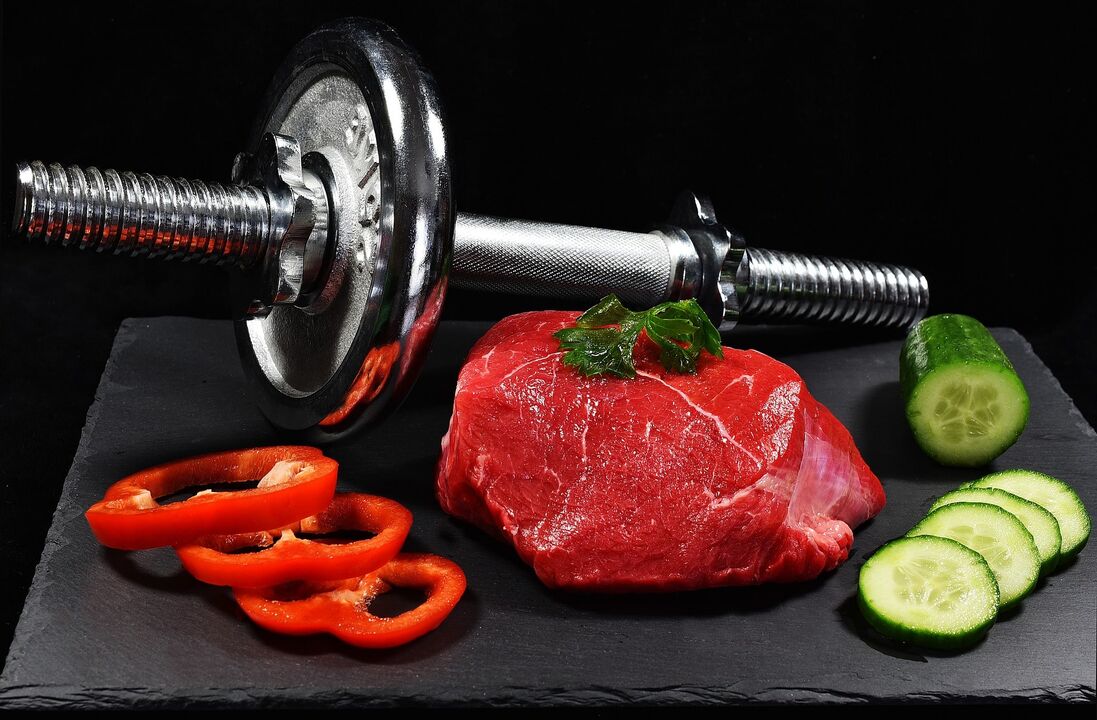
People with the first blood type are universal donors, meaning this blood type is suitable for everyone. By the way, mosquitoes prefer the first blood type above all others.
Eating behavioral characteristics (hunters, meat eaters)
Absolutely all ancient people living in primitive communal systems had the first blood group, and all the rest occurred by mutation.
Now let's recall the history of the Ancient World, archaeological excavations and the conclusions of scientists - 40, 000 years ago, primitive people lived by hunting and gathering. Their main diet consists of meat, meat and more meat, followed only by roots, herbs and some edible fruits and berries that grow wild in the forest.
So, the owners of the first group carry the genes of the most ancient hunters, and their body at the genetic level requires as much protein as possible. Unfortunately, the diet is poor at best. If you decide to follow such a diet, then you will have to give up a large amount of your favorite foods.
The diet of people with blood type 1 includes meat, fish and vegetables. It is better not to consume milk and its derivatives.
Allowed and prohibited products
| What can you eat? | What to limit? | Neutral product | |
|---|---|---|---|
| Meat | Beef, veal, lamb, turkey, offal (liver, heart), minced beef. | Ham, ham, smoked meat, pork, lard, goose. | Rabbit meat, duck meat, broiler meat, chicken meat, eggs. |
| Fish and seafood | Halibut, sturgeon, seaweed, fresh herring, pike, cod, mackerel, salmon, cod. | Salted and pickled herring, catfish, caviar, smoked salmon, catfish. | Carp, sardines, flounder, squid, perch, perch, tuna, eel, crustaceans. |
| Oil | Olives and flaxseeds. | Peanuts, corn, cottonseed, soybeans. | Cod liver oil, margarine, soy, sunflower and avocado. |
| Nuts and seeds | Walnuts, pumpkin seeds. | Peanuts, poppy seeds, pistachios. | Almonds, hazelnuts, pine nuts, sunflower seeds. |
| Dairy products | — | Almost all dairy products. | Sheep cheese and cheese, cheese. |
| Vegetables and fruits | Broccoli, kale, kohlrabi, watercress, leeks, onions, parsley, hot peppers, radishes, Jerusalem artichokes, pumpkin, chicory, spinach, cherry plums, figs, plums, cherries, prunes, apples. | White cabbage, Brussels sprouts, Chinese cabbage, red cabbage, cauliflower, potatoes, rhubarb, mushrooms, lentils, avocados, oranges, melons, raspberries, tangerines, olives. | Zucchini, green onions, carrots, cucumbers, sweet peppers, radishes, radishes, lettuce, lettuce leaves, beets, celery, asparagus, tomatoes, black beans, green beans, green beans, white beans, pineapple, watermelon, banana, cranberries, grapes, cherries, blueberries, pomegranates, grapefruit, pears, raisins, kiwi, cranberries, gooseberries, lemons, raspberries, nectarines, peaches, grapes, persimmons, blueberries. |
Sample menu for one day
- Breakfast– Grilled steak, fresh vegetable salad.
- Snacks– apples or any other seasonal fruit allowed.
- Dinner– Grilled salmon, green tea.
- Afternoon snack– a handful of walnuts.
- Dinner– Seaweed cocktail with seaweed.
Diet according to blood type 2
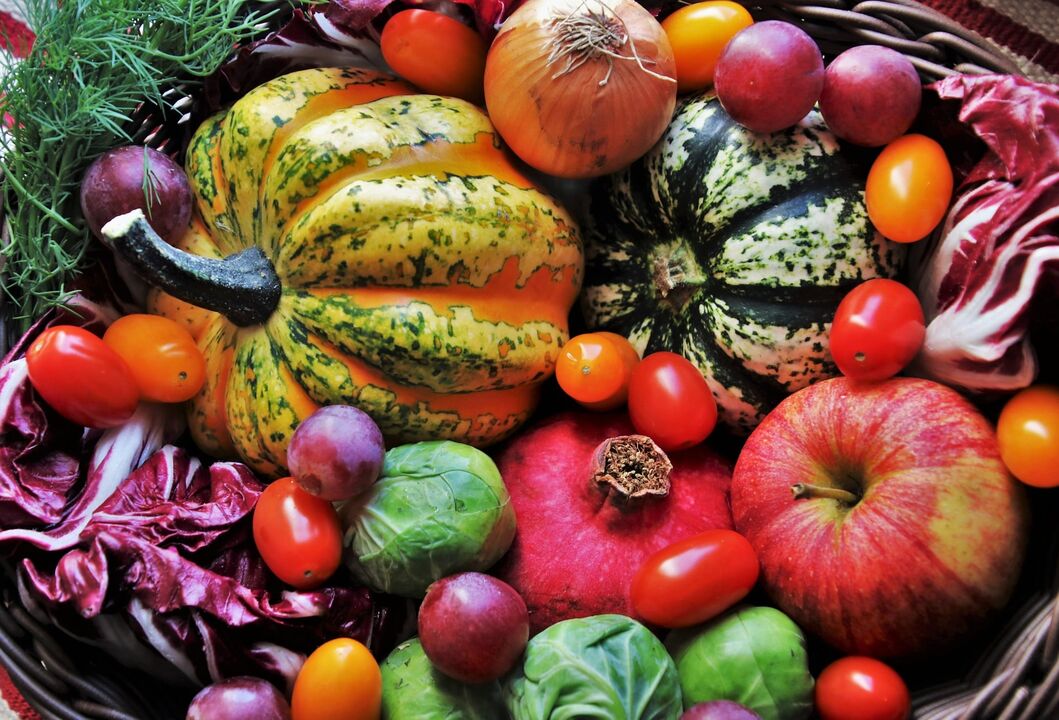
No less popular group. It is literally several hundred years younger than the first and was formed by mutation after ancient hunters decided to settle in a permanent place and engage in agricultural work.
People with blood type O produce more of the hormone cortisol, which helps cope with stress. In addition, unfortunately, they are susceptible to alcoholism.
Characteristics of eating behavior (farmers)
25, 000 years ago, carnivorous hunters learned to cultivate the land and receive gifts from it. This was the beginning of the development of the agricultural lifestyle. People began to build settlements, farm, and grow cereals and vegetables.
Food had less protein, animals moved away from humans, and finding meat became more difficult.
Sometimes the second blood type is called "vegetarian". The largest number of its speakers live in Europe.
The diet of people with the second blood type should include vegetarian dishes, fish, poultry and dairy products. But it is recommended to give up coffee, beans and meat.
Allowed and prohibited products
| What can you eat? | What to limit? | Neutral product | |
|---|---|---|---|
| Meat | — | Beef, veal, lamb, offal (liver, heart), minced beef, ham, bacon, ham, goose and duck meat, pork, rabbit, lard. | Eggs, broilers, chickens, turkeys. |
| Fish and seafood | Types of salmon, carp, mackerel, fresh herring, cod, mackerel, salmon. | Squid, catfish, caviar, flounder, flounder, smoked salmon, catfish, crustaceans, salted herring. | Coi, seaweed, pike, tuna, perch, sturgeon. |
| Oil | Olives and flaxseeds. | Peanuts, coconut, corn, cotton, avocado. | Cod liver oil, margarine, soy and sunflower. |
| Nuts and seeds | Peanuts, pumpkin seeds. | Pistachios. | Almonds, hazelnuts, poppy seeds, sunflower seeds, pine nuts and walnuts. |
| Dairy products | — | Milk, ice cream, cream, whey, cow's milk cheese. | Yogurt, kefir, goat milk, sour cream, sheep cheese and curd, fresh cheese. |
| Vegetables and fruits | Broccoli, collard greens, kohlrabi, watercress, green onions, leeks, onions, carrots, parsley, radishes, pumpkin, chicory, spinach, black beans, various beans, beanslentils, cherry plums, pineapple, cranberries, cherries, blueberries, grapefruit, raspberries, figs, cranberries, lemons, plums, cherries, blueberries, prunes, apples. | Tomatoes, white cabbage and cauliflower, mushrooms, olives, hot and sweet peppers, potatoes, rhubarb, tangerines, bananas, oranges. | Paprika, nutmeg, coriander, cloves, radishes, beets, cucumbers, zucchini, fennel, Brussels sprouts, radishes, lettuce, celery. |
Sample menu for one day
- Breakfast– Buckwheat porridge, Korean carrots, green tea.
- Snacks– any fruit or vegetable is allowed.
- Dinner– Boiled chicken breast served with green beans.
- Afternoon snack- carrot juice.
- Dinner- Fruit salad with cheese.
Diet according to blood type 3

The third group is quite rare and more typical of the peoples of Asia - in the old days they were famous for their huge herds of livestock - horses, cows, goats and sheep. Of course, they had to wander from place to place to feed the animals.
Characteristics of eating behavior (nomadism)
As soon as milk and dairy products began to be actively included in the diet, and this happened about 10, 000 years ago, the blood mutated again.
Asia has the largest number of people of the third blood group - these are genetic nomads.
This type of people is the luckiest - they have practically no restrictions, they are omnivores. It is necessary to exclude semi-finished products, smoked meat, alcohol.
Allowed and prohibited products
| What can you eat? | What to limit? | Neutral product | |
|---|---|---|---|
| Meat | Lamb, rabbit, eggs. | Ham, bacon, pork, duck, goose and chicken, chicken. | Beef and ground beef, turkey, lard. |
| Fish and seafood | Almost all types of fish. | Smoked salmon, caviar, seaweed, eel, crustaceans. | Carp, sardines, perch, herring, tuna, catfish. |
| Oil | Olive. | Margarine, peanuts, coconut, corn, cottonseed, soybeans, sunflower. | Avocado and flaxseed, cod liver oil. |
| Nuts and seeds | Poppy. | Peanuts, pine nuts, hazelnuts, pumpkin seeds and sunflower seeds. | Walnuts, almonds. |
| Dairy products | Yogurt, kefir, goat's milk, sour cream, sheep cheese, fresh cheese. | Cream. | Whole milk, cheese, whey, cream. |
| Vegetables and fruits | Cauliflower, white and red cabbage, carrots, broccoli, hot and sweet peppers, beets, watercress, pineapple, cranberries, bananas, grapes, apples, cranberries, plums. | Corn, lentils, beans, potatoes, rhubarb, radishes, radishes, tomatoes, pomegranates, avocados, pumpkins, strawberries, olives, persimmons. | Melons, spinach, watermelons, grapefruit, cherries, figs, blueberries, raisins, pears, blackberries, blueberries, lemons, kiwis, strawberries, gooseberries, prunes, raspberries, nectarines, grapes, peaches, sweet cherries, fennel, kohlrabi, onions, zucchini, asparagus, parsley, radishes, beets, celery, Jerusalem artichokes. |
Sample menu for one day
- Breakfast– boiled eggs, cheese, herbal tea.
- Snacks- seasonal fruits.
- Dinner– Cream of mushroom soup, rabbit stew.
- Afternoon snack– natural yogurt with banana pieces.
- Dinner– Boiled veal with green beans.
Diet according to blood type 4

The fourth group was formed by mixing the second and third groups after people began to live in large settlements and cities.
People with blood type IV are more likely to develop senile dementia and Alzheimer's disease. But they are also popular donors of plasma, which is very valuable in treating burns.
Peculiarities of eating behavior (mysterious)
This bloodline is the youngest, its age does not exceed two thousand years. It is truly unique in its composition and has the ability to fight autoimmune diseases and allergies.
These people have a mixed diet and have relatively few dietary restrictions. But they should eat as many natural biological foods as possible.
Allowed and prohibited products
| What can you eat? | What to limit? | Neutral product | |
|---|---|---|---|
| Meat | Lamb, rabbit, turkey. | Beef and ground beef, ham, bacon, poultry, pork. | Eggs, liver, lard. |
| Fish and seafood | Salmon, caviar, mackerel, perch, sturgeon, pike, pike perch, cod, tuna, salmon, mackerel. | Squid, flounder, smoked salmon, flounder, salted herring, eel, cod. | Seaweed, carp, perch, catfish, fresh herring. |
| Oil | Olive. | Margarine, avocado, coconut, corn, cottonseed, sunflower. | Peanuts, soybeans, flaxseed, cod liver oil. |
| Nuts and seeds | Peanuts, poppy seeds, walnuts. | Pumpkin seeds and sunflower seeds, hazelnuts. | Almonds, pistachios, pine nuts. |
| Dairy products | Yogurt, kefir, goat's milk, sheep cheese, cottage cheese, sour cream. | Ice cream, ice cream, whole milk. | Whey, cheese, skimmed milk, |
| Vegetables and fruits | Cabbage, beets, potatoes, figs, celery, kiwi, cherries, pineapple. | Black olives, green peppers, corn, bananas, coconuts, pomegranates. | Carrots, kohlrabi, horseradish, Chinese cabbage, apples, apricots, watermelon. |
Sample menu for one day
- Breakfast– whole grain bread, tofu (tofu), radish salad.
- Snacks- vegetables or cheese.
- Dinner– Grilled fish with mashed potatoes, carrot salad.
- Afternoon snack- Yogurt.
- Dinner– omelet, lettuce, whole grain bread.
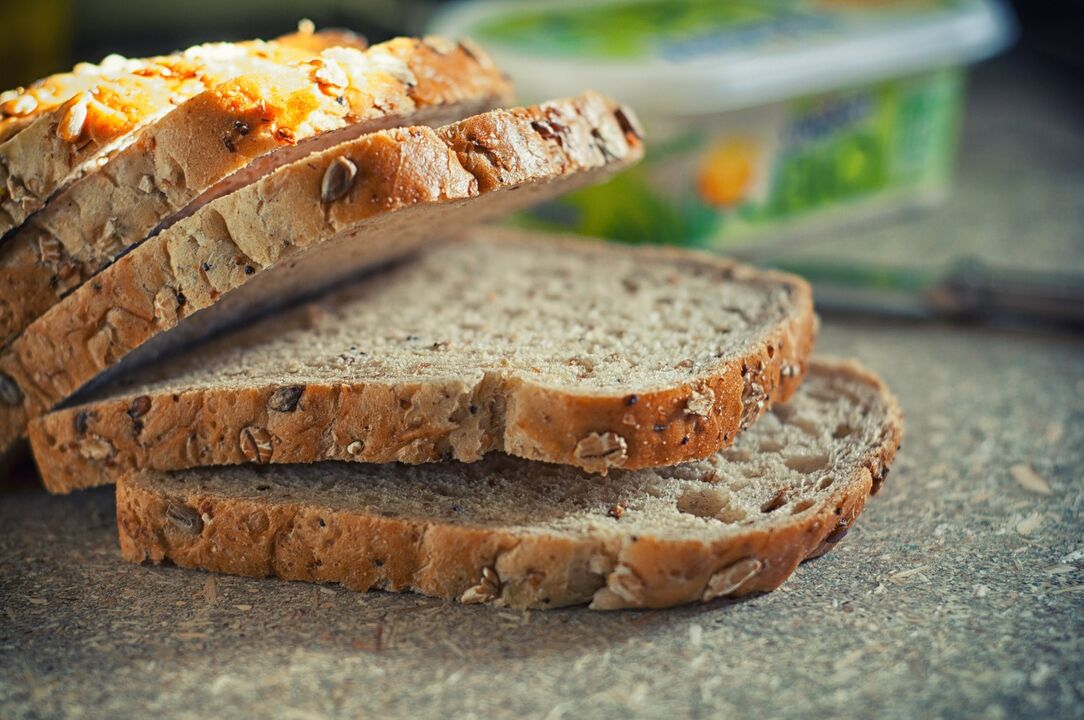
Does Rh factor affect nutrition?
From school we know that there are four blood types in total, and if we take into account the Rh factor, their number doubles. It was first discovered after studying rhesus monkeys, which is why it got its name. The Rh factor can be positive and denoted as (Rh+) or negative (Rh-). It indicates the presence or absence of an antigen (protein) found on the surface of red blood cells (erythrocytes).
But in fact, dividing blood into four groups is just arbitrary - if we take into account all the properties of blood, there will be much more. D'Adamo ignores this fact.
In D'Adamo's famous book, there is no mention of the influence of the Rh factor. Since more than 80% of the world's population has a positive Rh factor, the diet is designed specifically for these people.
Contraindicated with diet
Without prior consultation with a doctor, people with the following diseases are not allowed to carry out a diet on their own:
- diabetes;
- chronic digestive problems;
- blood dyscrasias;
- ARVI.
In addition, if the disease becomes severe, you should not follow any diet until you feel better.
Do not under any circumstances experiment on yourself during pregnancy or breastfeeding, remember that you are responsible not only for your life, but also for your baby.
Reviews of people who lost weight
- "This is the ideal diet for people with no health problems. However, if you are overweight, a priori there are all kinds of diseases so the diet will no longer be effective. Of course, it is convenient that there is a large selection of products, but this method did not suit me - the doctor prohibited eating all the products allowed on the table. It turns out that this table is almost 90% contrary to the advicedoctor ".
- "I do not have a medical education, but I clearly see a huge disadvantage - a completely unscientific diet. One of them is that people in the second group should be vegetarian, and people in the second group should be vegetarian. The third and fourth are omnivores, but they are exactly descended from the second group. All in all I wouldn't even try. "
- "In a few months I lost 10 kg! Blood type diet is great, very easy to lose weight. I think you can maintain this diet for the rest of your life. I recommend a great dietThis is great for everyone who wants to lose weight!
- "Blood type diet is complete nonsense. Do not torture yourself with these healthy, harmful and neutral products. Eat everything in moderation, without fanaticism. If you want something sweet, eat 1-2 candies, not a whole bar of chocolate; if you want to eat bread, cut a piece and eat it but don't starve. "
- "I introduced approved products for the second blood type at work - the whole team laughed, wiped away tears and ate a cutlet (yes, yes, half of our team were "farmers""). Honestly, I have never seen a more stupid and completely unacceptable diet! "
Doctor's opinions and criticism
The blood test diet is not approved by your doctor. After all, each person is an individual, so it is necessary to conduct complex studies and have data on more than 60 specific genes responsible for endocrine and enzymatic activity, and only then createout on a diet. And blood type in this case is too general a factor and cannot be responsible for the correctness of the menu of a particular person.
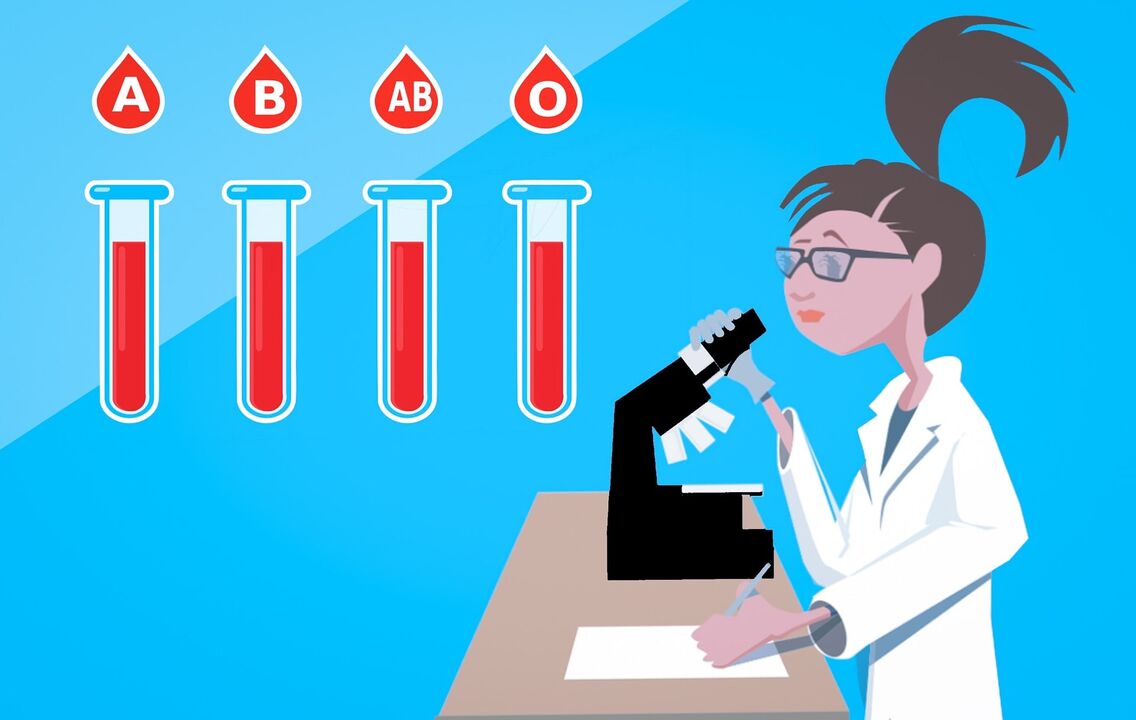
Thus, doctors clearly believe that D'Adamo's theory has no scientific basis, is little researched but does not cause any specific harm. And in some cases, it even helps stimulate the body and activate a faster metabolism.
In addition, D'Adamo included truly harmful products in the list of prohibited foods for all blood types - sausages and smoked meats, store-bought sauces, ice cream, carbonated drinks, alcoholand several other types.
Well, don't forget about the placebo effect – a person believes and loses weight.
Pros and cons of the diet
Favorable:
- a large list of allowed products;
- easy to carry;
- the ability to create a varied and balanced menu;
- You can stick with it for a long time.
Errors:
- not having a clear plan for how, when and how much to consume certain products;
- The diet has no scientific basis, all conclusions are too general;
- another lucrative business for nutritionists and of course the creators themselves.
Conclusion
As practice shows, some people can really lose weight on this diet. But they note that the results do not last - the weight always comes back. Therefore, you will have to eat properly almost all your life.














































































